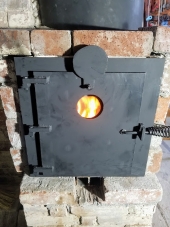




"Again?!?" - little Harriet on being awakened for the second day of kindergarten
 1
1








"Again?!?" - little Harriet on being awakened for the second day of kindergarten
 1
1





 2
2




God of procrastination https://www.youtube.com/watch?v=q1EoT9sedqY
 1
1




"Again?!?" - little Harriet on being awakened for the second day of kindergarten





God of procrastination https://www.youtube.com/watch?v=q1EoT9sedqY





God of procrastination https://www.youtube.com/watch?v=q1EoT9sedqY




"Again?!?" - little Harriet on being awakened for the second day of kindergarten

 2
2





God of procrastination https://www.youtube.com/watch?v=q1EoT9sedqY




"Again?!?" - little Harriet on being awakened for the second day of kindergarten

 5
5




For all your Montana Masonry Heater parts (also known as) Rocket Mass heater parts.
Visit me at
dragontechrmh.com Once you go brick you will never go back!




"Again?!?" - little Harriet on being awakened for the second day of kindergarten




 1
1




For all your Montana Masonry Heater parts (also known as) Rocket Mass heater parts.
Visit me at
dragontechrmh.com Once you go brick you will never go back!





Then you crush it and make grog (chamote) with it.thomas rubino wrote:Hi Karl;
Interesting product. Temp wise it would stand up in a RMH.
Here is the thing about refractory mortar.
It sets up rock solid and it will crack on the joint with the rapid temperature changes in a batchbox.
Clay can crack on joints as well but is easily reapplied with a wet finger...
Believe it or not with proper support on the outside, dry stacking bricks works very well.
Another disadvantage to refractory is trying to clean it off to reuse a brick.
Clay mortar falls off into your bucket. Add water and rehydrate to use again.
In some high heat locations fireclay can turn into pottery and not rehydrate.
As soon as you are away from the core and riser, you can use regular Portland cement to build your bell if you wanted.

God of procrastination https://www.youtube.com/watch?v=q1EoT9sedqY




"Again?!?" - little Harriet on being awakened for the second day of kindergarten




"Again?!?" - little Harriet on being awakened for the second day of kindergarten





Nope, not really.Karl Wilson wrote:
does that sound okay?
God of procrastination https://www.youtube.com/watch?v=q1EoT9sedqY
 1
1




"Again?!?" - little Harriet on being awakened for the second day of kindergarten
 5
5




![Filename: 20211031_162149.jpg
Description: clay stabilized perlite in manifold [Thumbnail for 20211031_162149.jpg]](/t/167893/a/161338/20211031_162149.jpg)
"Again?!?" - little Harriet on being awakened for the second day of kindergarten




Karl Wilson wrote:while waiting for my fire clay (which hopefully really IS fire clay) I have started to consider feeding secondary air from the bottom.
I have some steel square cross-section tube - 1" OD, 7/8" ID - I was thinking I could use two of those - which is not exactly the spec - but seems to me might work...
thinking of hack sawing a 90 degree bite - and bending the remaining side to 45 degrees (possibly without welding - maybe "claying" around the bend - and simply cutting the top 45 degrees to face the port.
does that sound okay?
should the pipe go to top of port - or half way - or three quarters - or...
also how far back from the port is optimal.
the nice thing about this is that as long as I make the channel right I can still play with the design...
my back is ready for some radiant heat...
I'll take pictures once I get rolling




"Again?!?" - little Harriet on being awakened for the second day of kindergarten

|
Simplicity is the ultimate sophistication. - Leonardo da Vinci / tiny ad
Homestead Pigs Course
https://permies.com/wiki/365748/Homestead-Pigs
|







